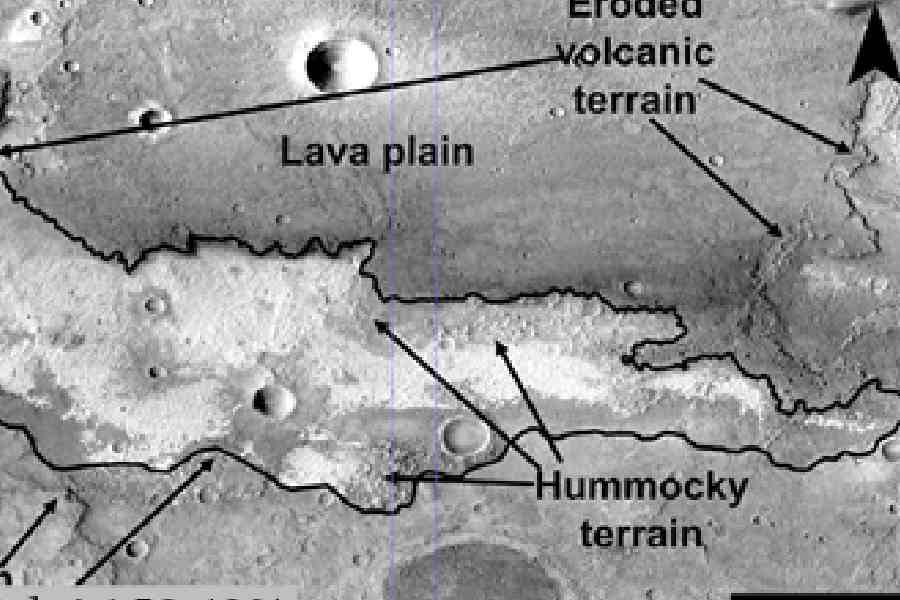Indian scientists have discovered that an ancient lake on Mars, now a parched and salt-encrusted barren landscape, may have provided conditions favourable for microbial life forms, offering fresh insights into the planet’s historical habitability.
The astrobiologists at the Physical Research Laboratory (PRL), Ahmedabad, have found through spacecraft imagery and geochemical simulations that the salt-laden minerals left behind by repeated wetting-and-drying phases of the lake could have been conducive to supporting microbial life.
Their study of the ancient lake located in a region named Terra Sirenum in Mars’s southern hemisphere has suggested that water flowed into and evaporated from the basin for over 13,000 years.
Terra Sirenum is an ancient region marked by craters, rugged land and valley-like channels. Earlier studies had established that Terra Sirenum is rich in chlorides and other salt-laden minerals. High concentrations of salt allow water to remain liquid at temperatures up to minus 40°C. The chlorides in Terra Sirenum had prompted scientists to speculate about its historical habitability.
Now, Deepali Singh and her colleagues at the PRL have analysed the salt-laden material in the elliptical-shaped basin, roughly 28km long and 14km at its widest, reaffirming its significance as a site favourable in ancient times for microbial life forms.
“Microorganisms have been found in even poorer geochemical environments on Earth,” Singh, a scientist at the PRL and the study’s lead author, told The Telegraph. The study by Singh and her co-authors Kinsuk Acharyya and Rishitosh Sinha has just been published in the Journal of Geophysical Research, Planets.
Planetary scientists have known since the 1970s that Mars once had liquid water. Geological features such as dried riverbeds, canyons and channels carved by flowing water indicate that Mars was wetter and warmer than its current cold and arid landscape.
US orbiter missions such as the Mars Global Surveyor and the Mars Reconnaissance Orbiter and lander missions such as Curiosity and Perseverance have uncovered evidence for ancient lakes, deltas and minerals that would have formed only in the presence of water.
The PRL team’s geochemical simulations of the amounts, concentrations and patterns of the salts scattered across Terra Sirenum suggest that the basin had experienced multiple wetting and drying phases that lasted over 13,000 years, early in the planet’s history some 3.7 billion years ago.
“Mars is now a cold, dry planet, but geological studies have suggested that the planet experienced intermittent periods of warmth,” Singh said. “During such warm periods, ice would have melted and the water would have flowed down valley-like features into the basin we studied.”
The PRL team used data generated by instruments aboard the Mars Reconnaissance Orbiter, a spacecraft that was launched by the US National Aeronautics and Space Administration and has been orbiting Mars since March 2006.
The combination and patterns of the salt-laden minerals — chlorides, sulphates, and clays — present in Terra Sirenum point to water activity conditions that would be considered “habitable” because of the repeated wet-dry phases.
Studies on Earth have shown that microbial activity can persist despite high salt concentrations and very low water levels. Even when basins dry out and the salts precipitate, it is possible for tiny amounts of water to remain trapped within the salts, allowing microbes to survive.
“We believe studies like these could help guide future missions to Mars,” Acharyya said.










